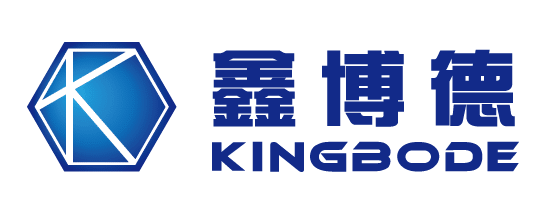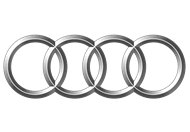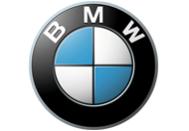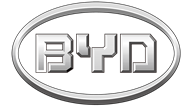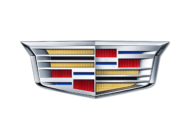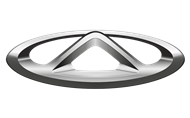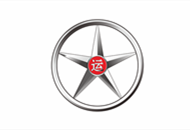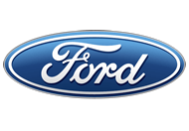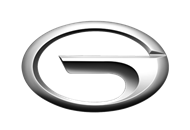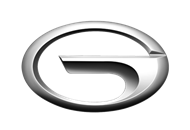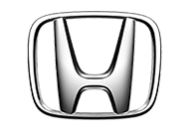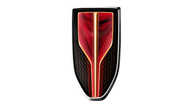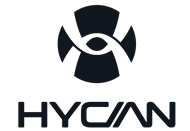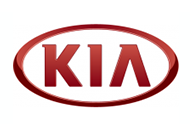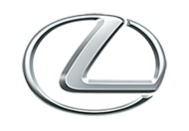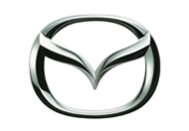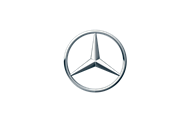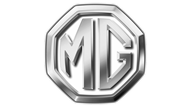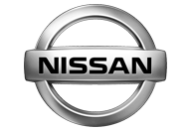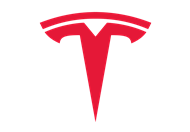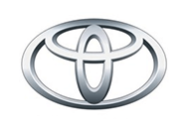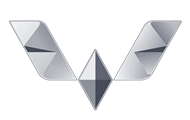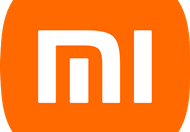Xiaomi YU7 is selling well, is Tesla out of options?
Xiaomi YU7 is selling like hot cakes, with over 200,000 orders in 3 minutes after its launch. The performance of Xiaomi YU7, a strong rival of Model Y, is somewhat shocking to the automotive industry. No one could have expected that Xiaomi YU7’s offensive would be so fierce, while Tesla, at the same time and space, is gradually falling into the quagmire of sluggish sales. Facing the “bullets” fired from all directions in the Chinese market, Tesla “raised prices” against the wind?
On July 1, according to Tesla China, the Model 3 Long Range Edition and the new Model Y Long Range Edition were upgraded. The acceleration time of the Model 3 Long Range Edition from 4.4 seconds to 3.8 seconds per 100 kilometers seems to be equivalent to a free standard acceleration package worth 14,100 yuan. At the same time, the cruising range under CLTC conditions increased from 713km to 753km, while the Model Y Long Range Edition adopted the strategy of “increasing quantity without increasing price”. On the basis of maintaining the original price, its cruising range increased from 719km to 750km. This adjustment not only involves the improvement of product performance, but also involves subtle changes in price. The price of the Model 3 long-range version has been increased by 10,000 yuan.
Tesla’s product upgrade and price adjustment not only reflects its strategic shift in the Chinese market, but also reflects Tesla’s current situation in China. Under the “encirclement and suppression” of a number of new forces, Tesla is changing its ways to sell cars.
Tesla is losing its “magic“
Tesla’s sales myth is losing its “magic”. According to the China Passenger Car Association, Tesla’s wholesale sales in China in May are estimated to be 61,700 vehicles, a year-on-year decrease of 15%. This is the eighth consecutive month of sales decline in Tesla China. Among them, Tesla’s wholesale sales in China in February were only 30,700 vehicles, a year-on-year plunge of 49.2%.
Tesla’s situation is not limited to the Chinese market, and major global markets are also retreating simultaneously. Although the US market is Tesla’s base camp, its sales in the first quarter of this year still showed a significant downward trend, from 140,200 vehicles in the same period last year to 128,100 vehicles. In the first four months of this year, Tesla’s cumulative sales in Europe also fell sharply by more than 38%, from 101,000 vehicles in the same period last year to 62,000 vehicles.

From 2021 to 2024, Tesla’s sales in China continued to rise. In 2020, with the commissioning of the Shanghai Super Factory, production capacity was released, and Tesla’s sales in China gradually climbed, and began to emerge in the Chinese market. In the following years, sales continued to grow. In 2024, Tesla’s sales were 657,000 vehicles, an increase of 8.8% year-on-year, but its market share in China fell slightly.
At the end of December 2024, Tesla lowered the price of Model Y by 10,000 yuan and extended the five-year 0% loan discount. In addition, the Model Y was renewed after 5 years at the beginning of this year, which boosted the volume to a certain extent, but still failed to bring Tesla back to its former state.
According to data released by the China Passenger Car Association, Tesla China’s wholesale sales in the first quarter of this year fell 21.8% year-on-year. Among them, the sales in February fell the most year-on-year. It is reported that it may be related to the transformation of some production lines in the Shanghai Tesla factory. In addition, the launch of the new Model Y also caused some consumers to wait and see, holding money for purchase, thus affecting the overall sales performance in the first quarter.

In January and February this year, Model Y sales in China dropped sharply compared to the end of last year, and sales in February did not even exceed 10,000. In March, with the gradual delivery of the new Model Y, sales rebounded to 48,000 units. Since most of the orders for the new Model Y that were previously on the sidelines and willing to buy were consumed in March, sales fell in April and May. It seems that the market’s feedback on the new Model Y is far from Tesla’s expectations.
In March, Tesla launched a 3-year 0 interest and 5-year low interest policy for the new Model Y rear-wheel drive version, and then extended this strategy to the long-range all-wheel drive version. On April 22, the 3-year 0 interest policy for the new Model Y was upgraded to 5 years 0 interest, but judging from the sales in April and May, consumers did not fully buy into Tesla’s promotional policy. A consumer who is waiting to buy the new Model Y said: It will definitely drop.
While cars are harder to sell, the Chinese market is becoming more and more important in Tesla’s global territory. In the first quarter of this year, Tesla’s cumulative sales in China were 137,200 vehicles, a year-on-year increase of 3.6%, accounting for 40.75% of global sales.
Compared with Tesla’s decline, Chinese local brands are collectively rising. Tesla’s two main models, Model 3 and Model Y, have been precisely “encircled and suppressed” by a number of domestic car companies.
In the 250,000-300,000 yuan range, Xiaomi SU7, Zeekr 007 and Xiaopeng P7 formed a “strangulation alliance” to divert potential users of Model 3 with higher configuration and lower prices. When Xiaomi SU7 and Xiaopeng P7 are equipped with 800V high-voltage silicon carbide platforms, which improve the charging efficiency to 5C, Model 3 is still stuck in the 400V architecture.
And Model Y is facing strong challenges from new forces SUVs such as Xiaomi YU7, Xiaopeng G7, and Ledao L60. These models have more advantages in intelligent and comfortable configurations. Take the two rivals Xiaomi YU7 and Xiaopeng G7 launched this year as an example. They are attacking Model Y from both sides with their differentiated advantages.
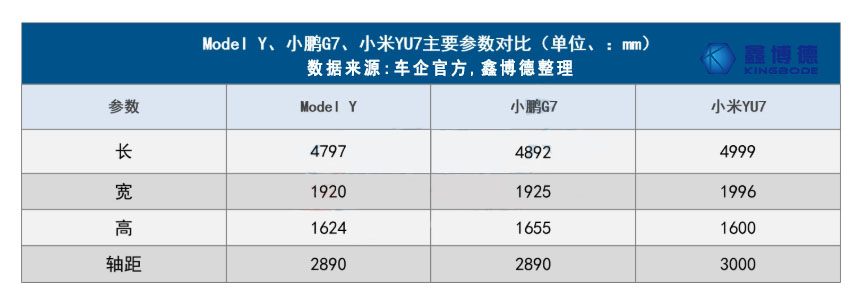
Xiaopeng G7 is the core strategic model of Xiaopeng Motors in 2025. It is positioned as a medium-sized pure electric SUV designed for family users. The price is expected to be 250,000 yuan. The body size is 4892×1925×1655mm and the wheelbase is 2890mm. It can be said that it is directly aimed at the size of Model Y.
Assisted driving is Xiaopeng’s “trump card”. Xiaopeng G7 will be equipped with 3 Turing AI chips with a total computing power of over 2200TOPS. It adopts the latest AI Hawkeye pure visual assisted driving solution, which not only realizes high-speed, urban assisted driving, smart parking, etc., but also makes full preparations for future upgrades to L3. In addition, Xiaopeng G7 is also equipped with an 800V silicon carbide platform and supports 5C supercharging technology. It is reported that Xiaopeng G7 will be officially launched on July 3, and pre-sale has been opened in mid-June. The pre-sale price starts at 235,800 yuan. The order volume exceeded 10,000 units in 46 minutes after the reservation was opened.
Another rival of Model Y, Xiaomi YU7, has been officially launched recently. Lei Jun said at the Xiaomi YU7 launch conference that “Model Y is a masterpiece in the era of new energy vehicles, with particularly good sales, and is the object of worship for our entire industry. Our car is designed with the dream of surpassing Model Y”, and brought Model Y to the launch conference to fight Xiaomi YU7 in close combat. In Xiaomi YU7’s home court, Model Y was undoubtedly defeated. In terms of product strength, Lei Jun’s previous words said that it was “several levels higher”.
In terms of space, due to the sporty attributes of Xiaomi YU7, except for the longitudinal space being slightly smaller than Model Y, its length, width and wheelbase are significantly better than Model Y. In terms of assisted driving, the entire Xiaomi YU7 series is equipped with a Thor chip with a computing power of 700TOPS, 1 laser radar, 1 4D millimeter-wave radar, 11 high-definition cameras and 12 ultrasonic radars. And the entire series is equipped with an 800V silicon carbide platform as standard.
Even though Model 3 and Model Y launched new models last year and this year, they have neither 800V high-voltage platform nor outstanding assisted driving experience. Tesla FSD needs to be purchased at an additional cost of 64,000 yuan, and its entry into China is not smooth. There are still problems such as misjudgment of traffic lights, incorrect recognition of road markings, mistaken entry into bus lanes, and poor performance in complex road conditions. The assisted driving ability is still far from the first echelon of domestically produced cars. Especially in terms of comfort configuration, Tesla’s minimalist “rough house” is even more crushed by a number of domestic car companies.
In terms of brand power, each company also has its strengths. Tesla has the first-mover advantage and Musk’s personal IP influence. Xiaopeng has made achievements in intelligence and has formed a competitive advantage. Xiaomi is based on the base of Mi fans transformed from the electronic consumer era and the moat of “people-car-home” smart interconnection to quickly enter the market.
In addition, the sluggish sales are also reflected in Tesla’s stock market. Since the high point of the stock price in December 2024, Tesla’s market value has been halved. If sales cannot rebound effectively, its future may be more difficult.
The dual dilemma of product strength and strategy
The Chinese auto market is becoming increasingly inward-looking. The reason why Tesla’s sales myth has fallen from the altar is that it is “encircled and suppressed” by Chinese rivals, but the most fundamental reason lies in the internal situation. In the ever-changing auto market, Tesla’s passenger car products and strategic layout seem to be stagnant.
Model 3 was unveiled in 2016, and Model Y was launched in 2019. The core design language of these two models that once defined the era still dominates the product image five years later. Although there have been updates during this period, they are mostly focused on software upgrades, minor interior adjustments or power system optimization, and have not touched the vehicle’s infrastructure and overall aesthetic innovation.
In contrast, Chinese automakers generally follow the rhythm of “one year of minor changes and three years of major upgrades.” Taking the core competitors of Model 3 and Model Y as an example, whether it is the Xiaopeng P7 series, BYD Han family, or NIO ET5 series, they have completed a comprehensive upgrade from exterior interior, smart cockpit to electronic and electrical architecture in a similar cycle. Especially in the field of intelligent driving, the iteration speed of the assisted driving system of Chinese brand models is much faster than Tesla’s performance in the Chinese market. While Tesla’s FSD is struggling to be implemented in China, Chinese automakers have quickly popularized and continuously optimized functions such as highway NOA and city navigation.
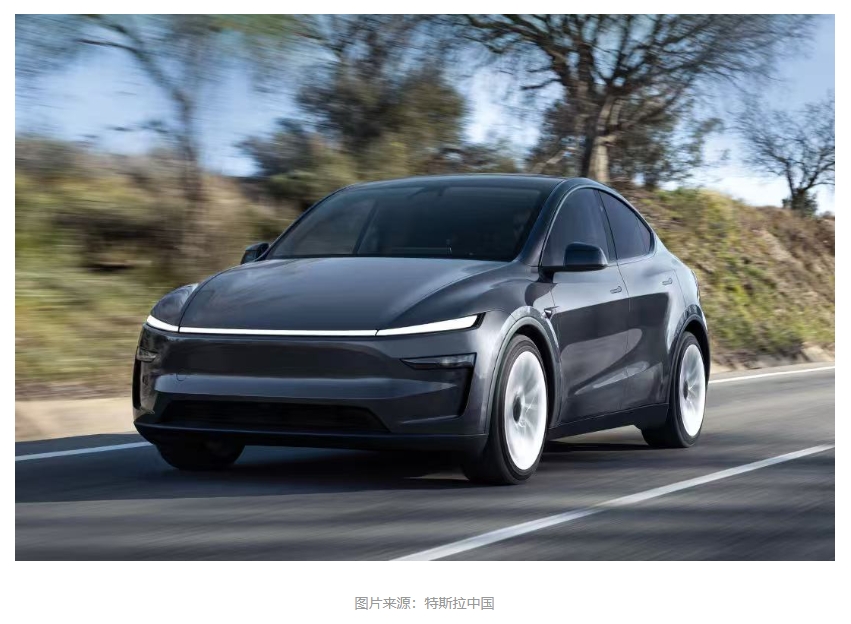
At the beginning of 2025, Model Y finally ushered in the “renewed version”, bringing through-type front and rear lights, a larger 15.4-inch central control screen, and a new 8-inch rear control screen. In terms of comfort, both the front and rear rows are equipped with heating functions, and the front row has a new ventilation function, and the double-layer soundproof glass has been upgraded. However, high-end configurations such as air suspension that are widely expected by Chinese consumers are still absent.
A Tesla salesperson privately revealed that “the customer churn rate in the showroom is 40% higher than last year. Many customers look back at Y after watching domestic competitors and feel that Y’s performance is mediocre.” Relevant industry analysts also said that “Tesla has difficulty keeping up with the pace of domestic competitors in China, and its product portfolio is limited and aging”, which directly reflects Tesla’s lag in the rhythm of product updates.
Tesla’s proud FSD fully automatic driving system has a bumpy journey into China. The core obstacle lies in China’s strict data security regulations. The regulations require that driving data collected in China shall not be transmitted abroad, which directly cuts off the key path for the FSD system to use China’s massive actual road data for model training and optimization. Therefore, the FSD system has long faced the dilemma of “not adapting to the local conditions” in China, and there are still problems such as misjudgment of traffic lights, incorrect recognition of road markings, mistaken entry into bus lanes, and poor performance under complex Chinese road conditions.
Data compliance issues are still an insurmountable gap for Tesla to promote high-level autonomous driving in the Chinese market. In response to this problem, Tesla reached an in-depth cooperation with Baidu in March 2025. According to relevant news, engineers from the Baidu Map team have entered Tesla’s Beijing office to work on data compliance solutions and localized adaptation. However, the effectiveness of the cooperation still needs time to verify. In February 2025, Tesla has pushed a new version of FSD to some Chinese users, but compared with the latest version in the US market, the Chinese version of FSD is still limited to the L2 level of assisted driving in terms of function, and its functions are limited to automatic recognition of traffic lights, steering, etc. In June last year, He Xiaopeng test-drove FSD in his country and said that FSD performed very smoothly throughout the whole process, and most road conditions were handled with peace of mind.
On the one hand, the functions of FSD in China have been “reduced”, while on the other hand, the assisted driving capabilities of Chinese local car companies have made great progress. Xiaopeng’s XNGP system has claimed to achieve “easy to use nationwide” urban pilot assisted driving. BYD has used the “Eye of God” system to greatly dilute the cost of high-end intelligent driving functions by relying on scale effects and decentralize it to 100,000 yuan models; Yu Chengdong of Hua has publicly stated that Huawei’s assisted driving technology is better than Tesla FSD even without laser radar.
Another point is crucial. In the field of passenger cars, Tesla not only has slow updates and iterations of existing models, but has also been out of licenses for a long time. Tesla’s vacillation and delay in its affordable electric vehicle strategy are particularly costly.
As early as the “Battery Day” event in September 2020, Musk first proposed to build a “national electric car” priced at about US$25,000 (about RMB 180,000) – a project later called Model 2, aiming to seize the largest market gap of 100,000 to 200,000 yuan.
However, the Model 2 project has been ill-fated and repeatedly delayed. In early 2024, Musk made a key decision to cancel the Model 2 project and shift the company’s strategic focus to artificial intelligence, betting Tesla’s future on Robotaxi and humanoid robots. According to relevant information, at the executive meeting held at the Palo Alto headquarters in late February 2024, there was a heated debate over whether Model 2 should stay or go. Several core executives advocated that Model 2 should be promoted in parallel with Robotaxi, believing that Model 2 can provide Tesla with vital stable cash flow and effectively hedge the possible high risks and high losses of the Robotaxi project, and the two can share production lines. But Musk ultimately rejected this proposal and was determined to bet on AI transformation and position Tesla as an artificial intelligence technology company.
This decision directly led to the departure of at least three executives who supported Model 2, including Rohan Patel, vice president of public policy and business development, within six weeks of the resolution. Patel once publicly questioned: “Our model shows that the investment return cycle of FSD and Robotaxi is long and difficult, especially in overseas markets, where regulatory barriers are very large.” Musk firmly believes that Robotaxi has disruptive potential and claims that Robotaxi annual sales will reach millions of vehicles.
In April this year, there was new news about Tesla’s economical models. According to Tesla’s first quarter 2025 financial report, Tesla’s revenue fell 9% year-on-year. At the same time, it reiterated that the plan for new models, including economical models, is progressing according to the original schedule and is expected to start production in the first half of 2025. The new models will integrate the next-generation platform technology with the advantages of the existing platform and share the production line with the existing models. Lars Moravi, vice president of Tesla’s automotive engineering, revealed that “these models are affordable and consumers can afford them.”
The repeated delays of Tesla’s new models are essentially the result of a fierce confrontation between Musk’s personal fanatical pursuit of AI and the capital team’s pursuit of real business interests. According to people familiar with Musk, his enthusiasm for electric vehicles has faded, and he believes that the mission of “opening the era of electric vehicles” has been completed, and subsequent car development is “routine operations.”
While Tesla was hesitant in its strategy and repeatedly delayed its low-cost models, Chinese automakers have already started a fierce battle in the blue ocean market of 100,000-200,000 yuan. BYD Seagull successfully lowered the high-speed NOA function to the 70,000 yuan level, and Xiaopeng’s MONA M03 entered the market with the city intelligent driving function at a price of around 120,000 yuan. Tesla has missed the golden window of opportunity to capture the market and consolidate its share in this core price range.
Conclusion:
From the slow product iteration, to the difficulty of FSD localization, to the hesitation of launching cheap models, Tesla’s sales “magic” has encountered unprecedented reality gravity in the Chinese market. When Musk’s interstellar dream collides with the actual sales report, the power structure of the global electric vehicle market is being dramatically restructured. The speed of technological iteration has become the new competition point. Chinese brands are planting flags in the territory that Tesla once monopolized with higher configuration, stronger intelligence, and better cost performance. This subversion is far from over, and the reshuffle has just begun.
